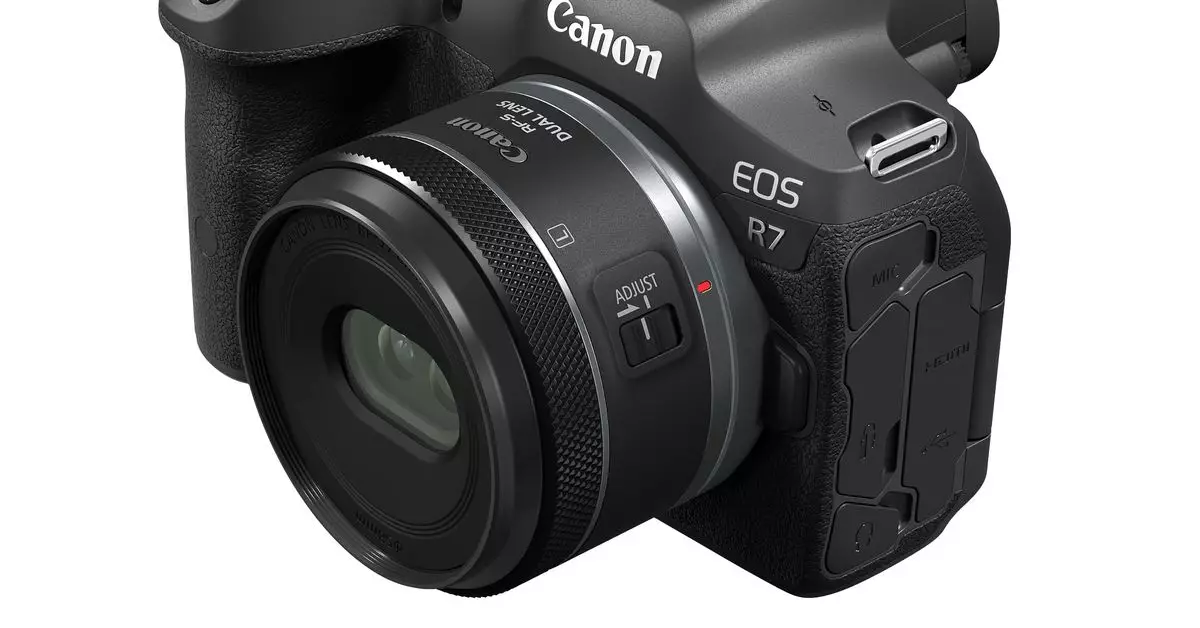Canon has always been at the forefront of camera technology, continually pushing boundaries to create innovative tools for photographers and videographers alike. Recently, the company unveiled its new RF-S7.8mm F4 STM Dual lens, a significant addition aimed at enriching the realms of 3D virtual reality (VR) and immersive video content creation. Initially introduced during Apple’s WWDC 2024, this lens promises an accessible entry point for content creators interested in 3D formats, catering particularly to those utilizing platforms such as the Meta Quest 3 and Apple Vision Pro.
At the heart of the Canon RF-S7.8mm F4 STM Dual lens is its unique design that incorporates stereoscopic elements within a compact frame, akin to that of a traditional two-dimensional camera lens. This innovative construction allows users to capture 3D visuals without the cumbersome size typically associated with similar lens technology. Priced at $449.99, this lens provides a significantly more budget-friendly option when compared to Canon’s high-end dual-fisheye offerings, which retail for prices steep enough to deter many aspiring creators.
The RF-S7.8mm F4 STM Dual lens has an aperture range of f/4.0 to f/16 and incorporates autofocus capabilities. Among its notable features are a dedicated button and control wheel that facilitate independent manual focus adjustments for the left and right sides, enhancing the creative potential for detailed visual applications. This lens is particularly optimized for capturing close-range subjects, with Canon proposing that the most impressive 3D effects will emerge when subjects are 6 to 20 inches away.
Price Comparison and Market Position
The introduction of the RF-S7.8mm F4 STM Dual lens at a retail price of $449.99 positions it attractively within the market, especially when considering that alternatives like the RF5.2mm F2.8 L Dual and the RF-S3.9mm F3.5 STM Dual both exceed $1,099. This price point not only makes cutting-edge technology more accessible but also invites a diverse range of creators to experiment with 3D content creation.
However, when the lens is mounted on the Canon EOS R7 camera—starting at $1,299—the comprehensive investment amounts to over $1,700. While this total may still seem substantial, it is a fraction of the cost compared to Canon’s elite 3D lens solutions, which can range from $2,498 to a staggering $6,298 when combined with necessary camera equipment.
Despite its affordability, the RF-S7.8mm F4 STM Dual lens shares differences in performance when compared to more expensive Canon models. While high-end lenses can achieve nearly 180-degree field of view, approaching the capabilities of human vision, the RF-S7.8mm captures a narrower field of view at approximately 63 degrees. This limitation must be taken into account by users, who may find its applications more suitable for close-up subjects rather than vast locales where panoramic capture is desired.
Moreover, producing usable footage that embraces the capabilities of VR necessitates a post-processing step. Canon provides tools like the EOS VR plugin for Adobe Premiere Pro and its EOS VR Utility software, both requiring a subscription, to transform the captured content into a format compatible with VR and augmented reality (AR) viewing.
The Canon RF-S7.8mm F4 STM Dual lens is not just another accessory; it stands to shift the landscape of 3D content creation. With affordable pricing and an array of tailored features, it eliminates barriers that often make 3D videography a challenging endeavor. Emerging creators now have the opportunity to delve into the VR space with this exceptional tool, allowing for innovation and creative expression that was previously reserved for industry veterans or those with deep pockets.
Overall, while the RF-S7.8mm F4 STM Dual lens may not rival the performance of higher-end counterparts, its blend of accessibility, usability, and potential for stunning close-range 3D capture positions it as a noteworthy investment for creators seeking to explore the exciting world of immersive content. As we look ahead, it’s evident that tools like these will be essential in shaping more diverse and captivating experiences in the ever-evolving digital landscape.

